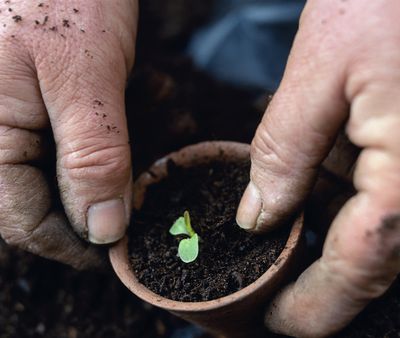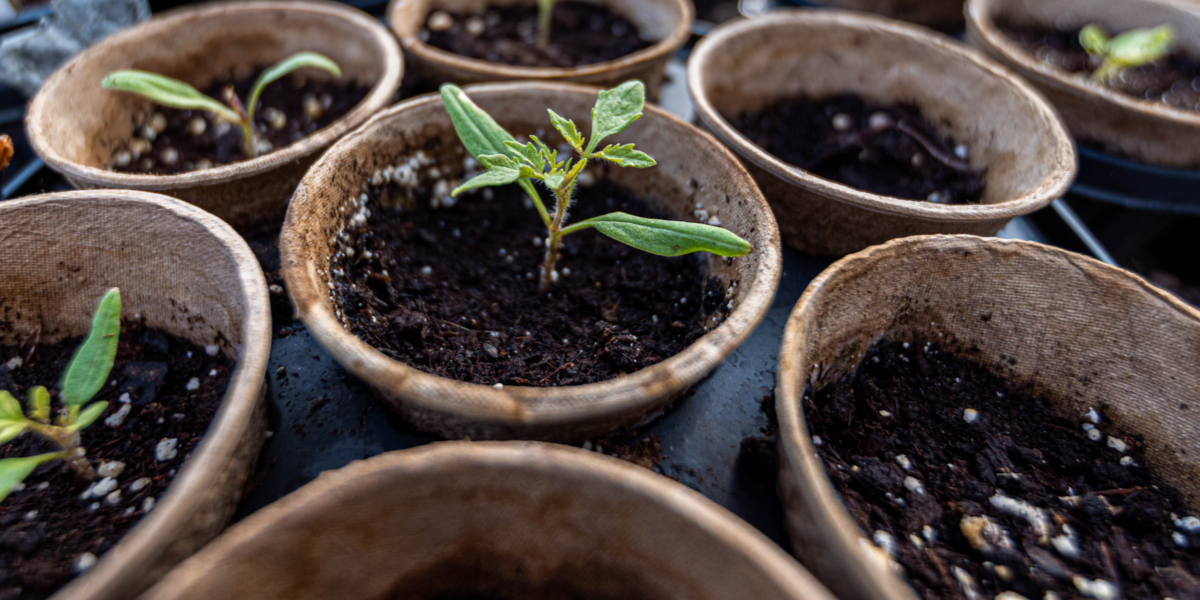Introduction: The Joy of Growing Plants from Scratch
Gardening is a rewarding hobby that connects individuals with nature, allowing them to nurture and watch their plants grow from seed to maturity. One unique aspect of gardening is preparing seeds from fresh fruit for planting. This process not only saves money but also provides a sense of accomplishment and self-sufficiency. By learning how to prepare seeds from fresh fruit for planting, gardeners can explore a more hands-on approach to cultivating their plants.
Selecting the Right Fruits: Finding the Perfect Seeds
When learning how to prepare seeds from fresh fruit for planting, it’s essential to start with the right fruits. Many popular garden plants, such as tomatoes, peppers, and melons, are easy to grow from seeds extracted from fresh fruit. Choose ripe, healthy fruits for the best results, as unripe or damaged fruits may yield poor-quality seeds or seeds that are less likely to germinate.
Tomatoes are an excellent choice for seed preparation, with numerous varieties available, from cherry tomatoes to heirloom varieties. Peppers, too, offer a wide range of options, from sweet bell peppers to spicy habaneros. Melons, including watermelon, cantaloupe, and honeydew, also provide ample opportunities for seed preparation, with each type offering unique characteristics and growing conditions.
Extracting Seeds: The First Step in the Process
Extracting seeds from fresh fruit is the initial step in learning how to prepare seeds from fresh fruit for planting. To begin, gather your tools, including a clean, sharp knife, a bowl, and a colander or strainer. Rinse the fruit thoroughly before cutting it open to minimize the risk of contamination. Once the fruit is open, carefully remove the seeds, ensuring that you handle them gently to avoid damaging them.
For fruits with seeds enclosed in a gel-like substance, such as tomatoes, it’s crucial to remove as much of the pulp as possible, as it can hinder seed germination. Place the seeds in a bowl with water, and gently agitate the mixture. The pulp and lighter seeds will float to the top, allowing you to skim them off and discard them. The heavier, viable seeds will sink to the bottom, ready for cleaning and drying.
Cleaning and Drying Seeds: Ensuring Proper Storage
Once you have extracted the seeds from fresh fruit, the next step in learning how to prepare seeds from fresh fruit for planting is cleaning and drying them. Proper cleaning and drying ensure that the seeds are free from fruit pulp and other debris, reducing the risk of mold and rot during storage. To clean the seeds, rinse them thoroughly under running water, gently swirling them to remove any remaining pulp or residue. After rinsing, spread the seeds out on a paper towel or a seed screen to dry.
Drying seeds is a crucial step in the process, as excess moisture can lead to spoilage. Allow the seeds to dry in a cool, well-ventilated area, away from direct sunlight. Stir the seeds occasionally to ensure even drying. Depending on the seed type, drying may take anywhere from a few days to a week. To test if the seeds are dry, gently press them between your fingers. If they feel damp or crack, continue drying them until they are completely dry.
Storing Seeds: Preserving the Harvest
After successfully cleaning and drying your seeds, it’s time to store them for future use. Proper storage is essential for maintaining seed viability and ensuring a successful planting season. When learning how to prepare seeds from fresh fruit for planting, understanding the best storage practices is vital.
Select suitable storage containers, such as airtight containers, jars, or envelopes, to protect the seeds from moisture, pests, and other environmental factors. Label each container with the seed type, variety, and date of storage to keep track of your seed collection. Ideal storage conditions include cool, dark locations with minimal temperature fluctuations, such as a basement, cellar, or refrigerator.
Preparing Seeds for Planting: The Final Step
Before planting your seeds, you may need to prepare them further, depending on the seed type. Some seeds, like those of certain legumes and hard-shelled fruits, benefit from pre-planting treatments such as soaking, scarifying, or chilling. These processes help to weaken or break down the seed coat, allowing water and oxygen to reach the embryo more easily and promoting faster, more uniform germination.
Soaking seeds in warm water for several hours or overnight can help soften the seed coat and stimulate germination. Some gardeners add a small amount of liquid seaweed or other organic fertilizers to the soaking water to provide additional nutrients for the seeds. Scarifying, or gently scratching the seed coat with sandpaper or a file, can also aid in breaking down the outer layer and improving water absorption.
For some seeds, such as those of certain perennials and biennials, a period of cold stratification may be necessary to simulate natural winter conditions. Place the seeds in a plastic bag filled with moist sand, vermiculite, or peat moss, and store them in the refrigerator for a few weeks to several months. Regularly check the moisture level and ensure that the seeds do not dry out during this period.
Planting Seeds: Nurturing New Life
Planting seeds is an exciting step in the process of how to prepare seeds from fresh fruit for planting. To ensure a successful germination and growth, follow these guidelines for planting seeds:
- Choose the proper planting depth, which typically ranges from 1/8 to 1/2 inch (0.3 to 1.3 cm) deep, depending on the seed size. Smaller seeds require shallower planting, while larger seeds can be planted deeper.
- Maintain appropriate spacing between seeds, which may vary based on the plant’s mature size. Consult seed packets or gardening resources for specific recommendations.
- Select a well-draining, loose seed-starting mix or create your own using equal parts peat moss, vermiculite, and perlite. Avoid using garden soil, which may contain pests, diseases, or weed seeds.
- Moisten the seed-starting mix before planting the seeds, ensuring that it is uniformly damp but not waterlogged. Maintain consistent moisture levels throughout the germination process.
- Provide adequate warmth for the seeds, as most require temperatures between 65-85°F (18-29°C) for optimal germination. Utilize a heat mat or place seed trays near a warm, sunny window.
- Monitor seedlings closely for signs of growth, and ensure they receive adequate light, ideally from a grow light or a south-facing window. Rotate seed trays regularly to promote even growth.
Conclusion: The Fulfillment of Nurturing Growth
Preparing seeds from fresh fruit for planting is a rewarding and engaging process that connects gardeners with the natural world. By mastering the techniques of seed extraction, cleaning, drying, and storage, you can preserve the harvest and ensure a steady supply of plants for your garden. As you embark on this journey, remember that patience, curiosity, and a love for gardening will serve you well.
The process of how to prepare seeds from fresh fruit for planting not only saves money but also fosters a deeper appreciation for the plants you grow. By starting from seed, you have the opportunity to experiment with unique varieties, observe the intricacies of plant development, and share your knowledge and seeds with others. So, embrace the satisfaction of growing plants from scratch and enjoy the fruits of your labor.




:max_bytes(150000):strip_icc()/save-sunflower-seeds-385625-hero-f5907ea55d434d6ca54cca445cf55a27.jpg)



